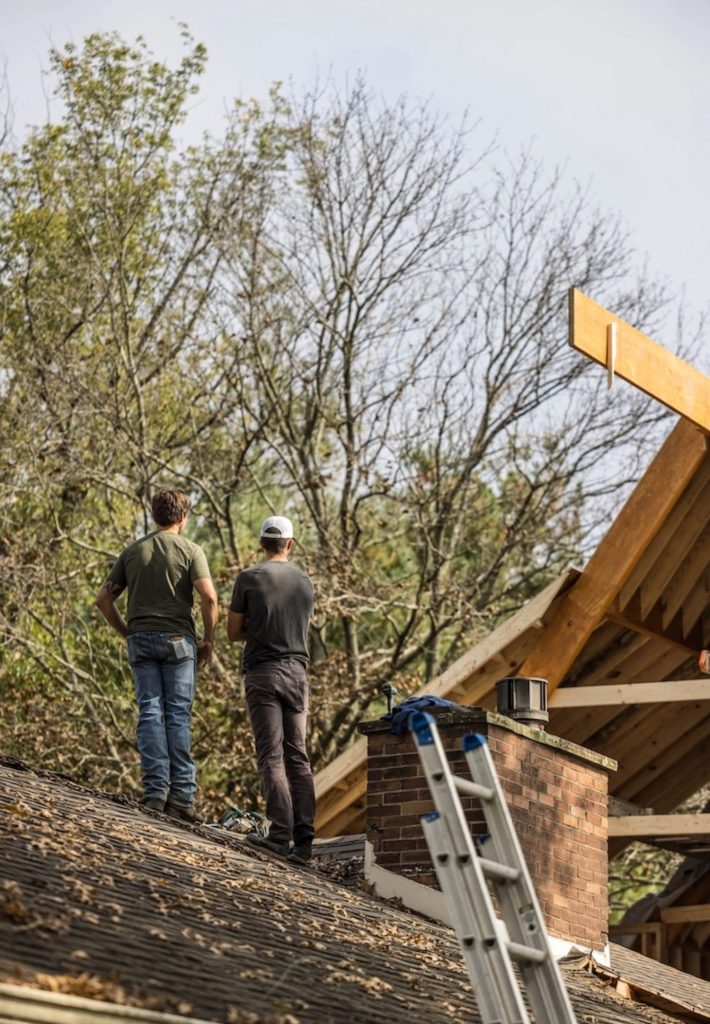“Bids are due by Tuesday at 5 PM” – an email that many residential builders and contractors are used to getting specifying a date and time when their bid for a new project must be turned in by.
How the Traditional Construction Bidding System Works
Before getting to this point, a client and architect usually work together (sometimes for months) on creating detailed architectural drawings and project specifications. Once the drawing set is ready, an architect usually contacts a handful of contractors to gauge their interest in doing the project. If interested, contractors are asked to create a quote to do the project and that must be turned into the architect by a specific date and time. All of the bids are then gathered and compared against each other. The client and architect use these bids to influence their decision on who the builder or contractor should be. This process has been widely used in the industry and remains the go-to choice for many architects to this day. So, what’s wrong with it?
The Problem With Cost-Only Comparisons
First, the intention of comparing quotes from competing contractors is to see how expensive everyone is. The theory is that all of the builders had access to the same drawing set for the same amount of time, and this is an easy way to compare apples to apples by analyzing everyone’s cost. If one builder is coming in $500K over another one, it could be an easy way to eliminate that builder from the running. However, this is where we run into the first problem.
Comparing residential construction estimates from multiple builders creates an overemphasis on cost alone. The project budget is a single aspect of the building process and even though it’s an important consideration, comparing cost by itself is not an accurate reflection of a contractor’s worth. It also potentially encourages contractors to purposefully underbid their competitors to get the job. If they can secure the project through the construction bidding system with an estimate that comes in lower than the competition, they’ve then locked in that particular project, even if the budget potentially ends up higher down the road.
The Pressure on Contractors
Next, creating an estimate for a project takes a lot of work. To create a fully flushed out estimate, it often takes over a month. In a lot of cases when we’re asked to bid a project, we don’t have the benefit of time on our side. The deadline for submitting bids is usually aggressive because the architect and client want to pick the contractor quickly and they might have a significant number of bids to sort through. This creates contractor bidding problems because you have to balance the time investment of working on a bid with all of your other active and potential projects. On one hand, you could expend significant resources on creating the bid only to not get the project. On the other hand, you run the risk of your proposal looking less detailed than the competition if you rush through it and don’t spend enough time getting to know the project and all of its nuances. In addition to the builder’s time, it also creates a challenge for suppliers and subcontractors who are, in turn, also asked to quickly bid a project and submit their bids back to the contractor. This results in a trickle-down effect of inefficiency because of all of the people involved in creating a bid with a single winner.


Bids Don’t Always Have the Right Context
To the average homeowner, the bidding process might feel like you are fairly comparing builders side by side. However, we feel that the construction bidding system can actually reward builders who are less detail-oriented or who use less expensive materials. For example, it’s common practice for us at Black Boot Builders to install sound-dampening insulation between floors of a house and also in the walls of any bathroom space. This is not required by code, but something that we do because it creates a better finished product for our clients and creates quiet spaces when someone is using a bathroom or walking on the floor above your head. As a result, we would appear to be more expensive than a competitor who does not use this insulation tactic as standard practice. To the average client, the insulation strategy we just described makes a ton of sense and is something that most clients would opt to pay for. However, all of those details are hidden whenever you are competitively bidding. Because the focus is often on the grand total, details about building materials are often overlooked. And because the architect is the one to present the various bids to the client, builders often don’t get the chance to defend their pricing. The insulation practice is a single example of how bids may differ between builders, so you can imagine the number of times this happens over the course of an entire estimate.
Taking Contractor Relationships Into Account
Last, the bidding system largely ignores relationships, which we feel is one of our competitive advantages. It’s not uncommon to submit a bid to an architect without ever meeting the client. When we have purposefully invested in a knowledgeable, friendly, and trustworthy team, a potential client has no way of appreciating that by only looking at a piece of a paper with a cost at the bottom. We like to think of building a house or completing a large-scale renovation as a long-term relationship. Our typical project length is between 8-18 months. In our opinion, professionalism, communication, and trust are just as important as the finances. For this reason, the construction bidding system employed by a lot of architects doesn’t actually capture the true value of a builder. The ironic thing is that the contractor is on site significantly more than the architect is. Excluding the builder from meeting the client prior to submitting pricing is a detriment to the client, and increases the likelihood of a poor relationship due to ill fit.
So, what process do we recommend instead?
A Better Way to Choose a Builder
To begin, our favorite architects know which projects we’re a good fit for and they usually don’t even reach out if they have a project that would be better suited for another contractor. Instead of architects casting a far and wide net to gather as many competitive prices as possible, the architect should identify a selective group of contractors that the client should meet with. The architect could consider things like project location, intricacy, schedule, and client personality in thinking through which contractors could be a good fit.
If a client wants to interview multiple builders, we have no problem with that. But instead of making contractors compete against one another on pricing initially, having a face-to-face meeting or a phone call is a great way of learning more about their company, their process, and their personality. After all, this company is going to be inside your home for an extended period of time. Wouldn’t you want to interact with them in the beginning? Let this be the first step in your contractor selection process. If a company doesn’t seem to align with your personality or the goals for the project, that should be the initial reason why you eliminate them from the running.
Next, it’s fair to ask the builders about an estimated timeline and budget. However, it’s not realistic to ask multiple builders to create highly detailed proposals with the intention to compare them side by side. We usually recommend a preliminary estimate – a 1–3-page document explaining an overall cost range that illustrates what we think the project could cost. We typically like to present this in person so the client can ask us questions, hear us talk about the project, and begin to develop a rapport with us. This usually also involves a meeting on site so that the contractor can see site conditions and lay eyes on the project themselves.
Then, the architect and client can select their builder of choice. The client tends to feel better about their selection because they are not making a blind choice. Instead, they’ve gotten the chance to meet the contractor and establish a relationship through multiple interactions. And, builders who do not end up being selected didn’t pour significant resources into the estimate.
Once the builder is selected, they join the project team and become an important member of the process to establish a final scope of work and price. They work hand in hand with the architect and client throughout the pre-construction phase. Of course, they do submit a detailed, formal proposal, but they are the only builder to do so. If the proposal comes in over budget, the builder works with the project team to value engineer and pivot as needed.
Sometimes, traditional practices deserve rethinking. In the case of the traditional construction bidding system, our team at Black Boot Builders pushes for a modern process that prioritizes fairness, team communication, and relationship building.
